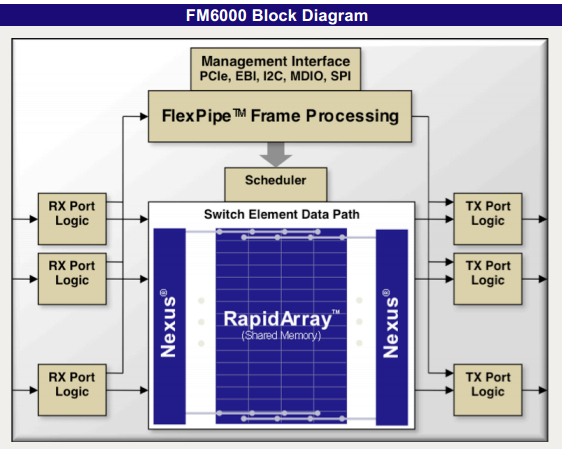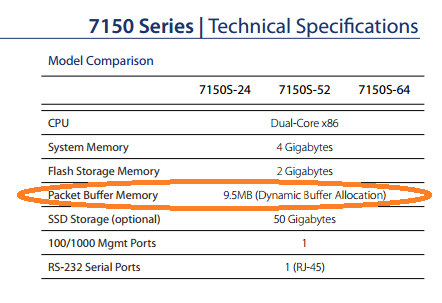LANZ can monitor the number of buffer blocks owned by a queue and spit out timestamp reports when the queue length is above a user specified threshold. The reports can fob off in many of the usual ways -- CLI logging to a local file, syslog, etc. The queue length can be polled at sub-millisecond rates, so pretty short bursts can be seen. LANZ is not available for Trident+ products, and Arista Warrior explains that ability to do this particular measurement is not built into the chip.
The datasheet for all 7150 models says about buffers:



Intel's product brief on the FM6000 has a more modest claim of 8 MB Shared packet memory size. These could both be true if 9.5 MBytes is total packet RAM and 8 MBytes is the size of the dynamic pool. But perhaps that is stretching too far...